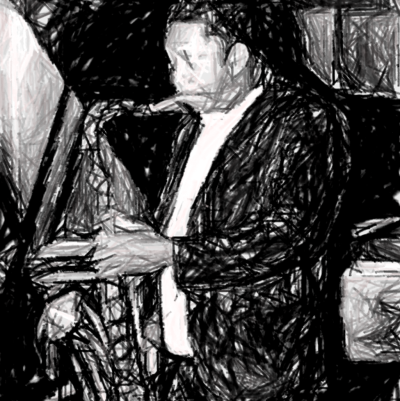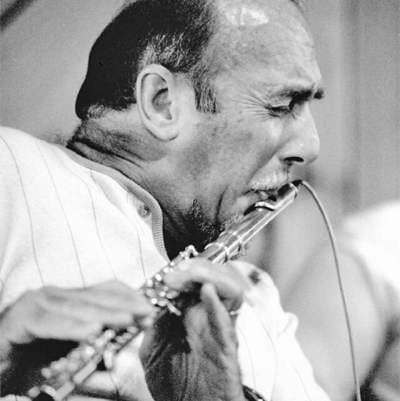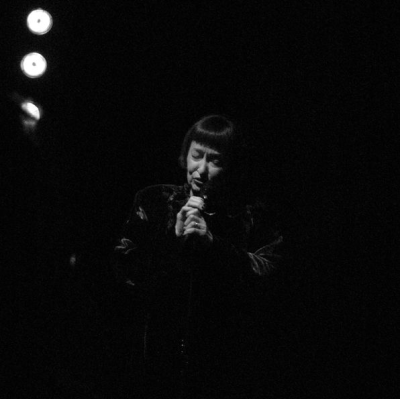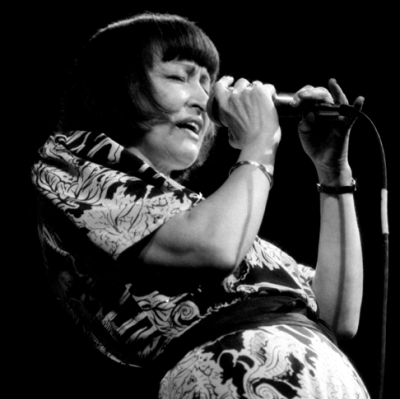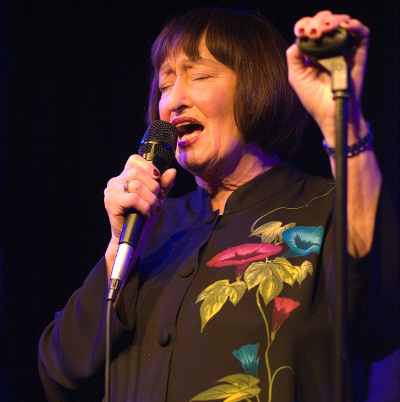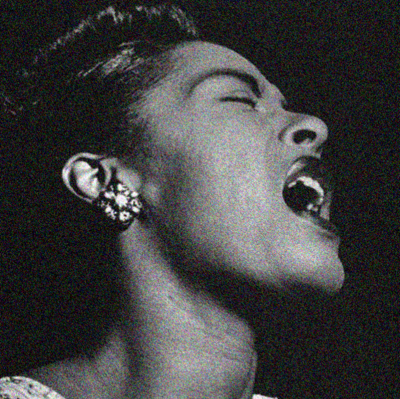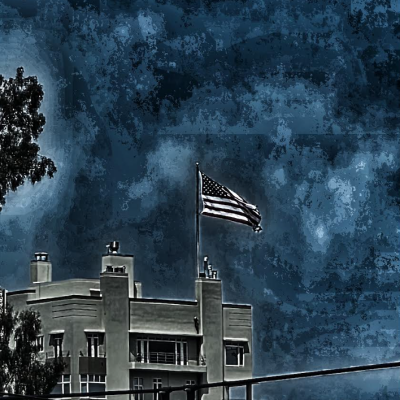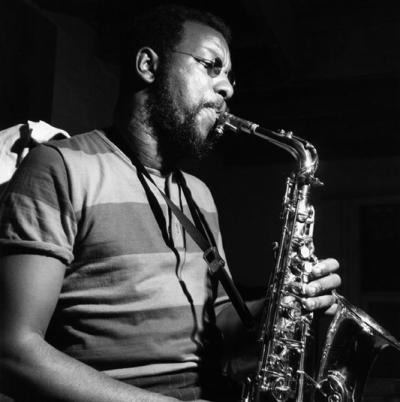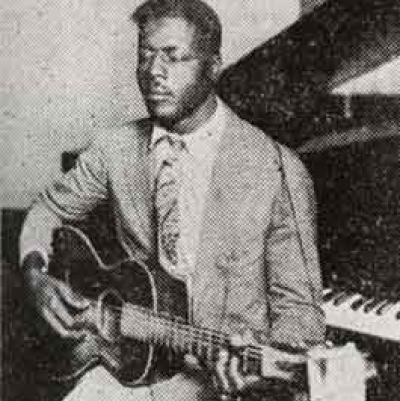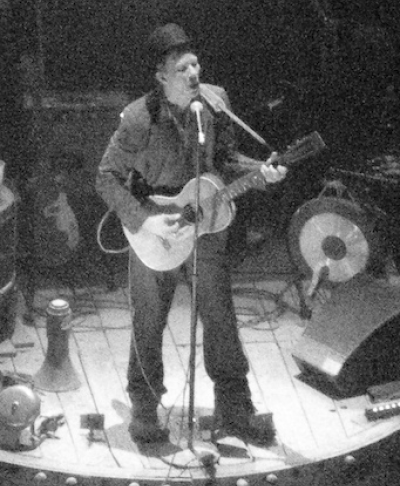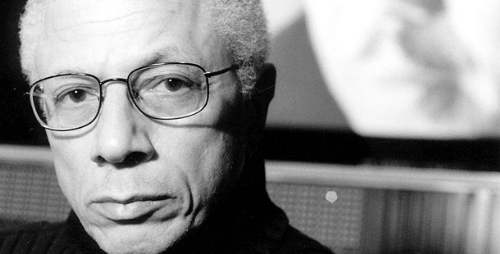
Filmmaker Avon Kirkland’s career as a chemist was cut short by his desire to create social change. The path he chose led to filmmaking, and along the way he has profiled great men, among them Booker T. Washington and Thurgood Marshall.
His latest film is on Ralph Ellison, the great American writer whose classic book of identity, Invisible Man, stands as a monument in literature. Ellison’s wide range of intellectual breadth and profundity surprised even Kirkland, and is documented in Ralph Ellison: An American Journey, the Sundance Film Festival nominated film that has found an audience via PBS.
In an interview with Jerry Jazz Musician publisher Joe Maita, Kirkland discusses his film and its visionary subject, Ralph Ellison
________________________________________
JJM Who was your childhood hero?
AK As a very young child, no one, other than people I would see in the movies, which tended to be cowboys. Later on, Jackie Robinson became a hero, because I am old enough, at age 65, to remember when he broke into baseball. Joe Louis preceded him, whose fights I could hear in Jacksonville, Florida. His victories were a source of great pride.
JJM Was there a particular film you saw as a young man that inspired you to want to become a filmmaker?
AK No, not at all. In fact, I never thought of becoming a filmmaker. I had a career as a scientist, and then was a publishing executive. I was bored by both, frankly. I have a PhD in Chemistry, which I received when I was 25 years old. I worked as a research scientist long enough to pay off my student loan, and then got hired by an educational publisher. I worked there for 3 years or so and had trouble relating to the profit motive. I liked doing things that had a political edge or dealt with social change. I took a year off and watched television an entire year. Following this experience, I thought I could get involved with television, and wound up getting a job at a PBS station, where I worked in programming for a couple of years, then began to produce. I was particularly spurred on by my distaste for a lot of the black characters I saw on television at the time. J.J. from Good Times, for example, was a persona I didn’t care for – that of a black clown that really distorted the image of black men to the country at a time when whites had little contact with blacks. That was an impetus for my getting involved with filmmaking.
JJM When did you first read Invisible Man?
AKWhen I was a graduate student of Chemistry. I bought it to read for fun, but it turns out it took more work than I anticipated. It is a very compelling book. As someone who grew up in the south, I could relate to the problems of the protagonist. Then, I didn’t read it again for 25 more years.
JJM Did you read it again prior to your pursuit of this film?
AK I read it again in the late 1980’s. By that time, I was producing television programs. I called Ellison’s agent at the William Morris Agency in New York to see if an option on the book was available. When he said “yes,” I was dumbfounded that so great a book was available to be optioned. He told me that while it was available, Mr. Ellison would require script control. That is not desirable if you are producing a program based on a book, unless you have an especially close rapport with the author of the book and he knows that you can’t do the entire book, for example. A notorious problem is that most producers don’t give authors script control or approval. That is one of the main reasons it hadn’t been optioned, and I let it go. When Ellison died in 1994, collections of short stories and essays came out and this brought him back to my mind.
JJM So you dug deeper …
AK Yes. I learned a great deal more about what his life had been like than I knew before. I didn’t know, for example, that he had been attacked so strongly during the 60’s by black nationalists and especially by black students who were in the vanguard of the civil rights movement. They disliked some of his essays and particularly his novel where the protagonist goes down into a hole in rebuke and scorn, so to speak. The more I learned about Ellison, the more intriguing he became. I began asking myself questions. Why didn’t he finish the second novel? Someone who wrote a book as great as Invisible Mandoesn’t have a second novel in him? What happened to him during the last 15 – 20 years of his life when he virtually disappeared from the radar screen? So, I looked into that, and found what I thought was a really important story. The story is not only telling of his life as a writer, but also about questions concerning the role of an artist and society – which was something he worried about a lot – and what his legacy was, which turns out to be quite substantial. He was a visionary who saw, for example, that jazz was America’s classical music. He said this way back before anybody else. Jazz really had a great deal in common with democracy, a point that was made over and over again by quoting Ellison in Ken Burns’ series on jazz. So, he was a visionary. A lot of his key ideas and philosophies are now coming into vogue. In other words, he was more than a mere story teller, he also was a first class intellectual and social thinker.
JJM Is this visionary element part of what you want the world to know about Ellison?
AK Yes. It receives substantial treatment in the documentary.
JJM You said in a recent interview you gave the Oakland Tribune that you “came to appreciate Invisible Man as more than just entertainment – as a book of ideas which set forth a perspective of American reality that many people credit as helping along the movement to civil rights action.” On the other hand, Ellison was criticized by many black activists as not being involved enough, to the point where he was labeled an “Uncle Tom” by the most radical wing. In your view, how did Ellison’s work help along the civil rights movement?
AK As one of our experts in the documentary, Professor Clyde Taylor of New York University said, he could not believe that black fiction could be so great, that we were victims of a kind of “inferiorization” as a people, and Ellison showed us that black life could be made into some of the best literature ever written. It is complex, profound, and provocative. Taylor said that learning that was, for him, an awakening about the value and dignity of black life. Remember, we are talking about the early 1950’s. There were a lot of us who thought that maybe white people weren’t right in saying that we weren’t quite up to snuff. A large part of the United States felt that way anyway, so Ellison’s character was specifically drawn to expand the view of black people and what we are capable of and what our life is like in America. He differed with his mentor, Richard Wright, who wrote the great novel Native Son. Wright’s character is basically a victim, who can do nothing, who doesn’t understand the forces that operate on him, who can do nothing to change his fate, and who himself suffered a rather sad and violent fate. Ellison said black life is mostly not like that. Yes, we are victims, but we are more than victims. We are creating in a space that we have had to work with – our own culture, our own ways for dealing with oppression. In doing so creatively, our humanity has been confirmed. We deal with these ideas in the film in very concrete ways. He says, for example, that contributions of black people to American culture have been extremely important in defining what American culture is – jazz, the blues, gospel, so many social dances, language. I like to make the analogy that comes from Ellison in this particular way – if not for the presence of African Americans in America, the United States might very well look like Canada.
JJMHe was indeed a revolutionary figure. He may not be recognized as one because his revolutionary thinking was subtle.
AK Right. He didn’t accept any of the old justifications for racial inequality. He said we are right there with everybody else. What is it about this country that is distinctive and who invented it? We did. The noted scholar Louis Gates of Harvard University said that Ellison’s actual act was one of “introjection.” Ellison said that not only are we Americans, we are as American as anybody else. So, he was defining America not as “white America.” During that time, if you thought of America, it was thought of mostly as being white. But, we have authored more of this culture than a lot of them. So, he is turning the whole reasoning upside down. He was indeed revolutionary. He gave us in Invisible Man a highly intelligent, articulate hero, instead of “down and out” types you would find in Native Son.
JJM In Ellison’s essay “Shadow and Act,” after seeing the great tenor saxophonist Lester Young in his hometown of Oklahoma City, Ellison describes him in the following way: “To us he was the future…that melodic line, so swinging, so sinuous, so unpredictable! A line so clearly – as you could hear – based on chords, but far out chords that could lift a blues or ballad out of sight!” How important was it to Ellison for him to be the “future” of literature in the way he perceived Young to be in music?
AK Well, that was exactly what he was trying to do when he wrote Invisible Man. First of all, he was a literary modernist who saw the world as being a lot more chaotic or unpredictable than the novelists of the late nineteenth century. He put forth a black character who, having been oppressed throughout most of the novel, and who retires to find out who he is, comes to define himself in terms of the black culture he came out of. Ellison was communicating that if you know your culture, your history, your struggle, your ancestors, thenyou are free. He played trumpet himself, and at one point he wanted to write a symphony based on the blues, so he looked to black cultural expression, jazz in particular, as evidence of our ability to transcend the confines of our social situation, and creatively move beyond it. So, like Lester Young, he took his work to another level.
JJM In an essay on jazz, he refers to bebop as “decadent intellectualism.” How is it that a writer of such intense creativity, who on the one hand demanded so much of his readers intellect, would on the other hand describe a musician’s abstract work as “decadent intellectualism?”
AK It is very surprising, isn’t it? I don’t know how it is, to answer your question, but I can tell you stories about Ellison and bebop. First of all, I am aware that he considered bebop overly intellectual. He liked jazz for dancing to. He had people inviting him to parties all over New York, not only because he was Ralph Ellison, but also because they liked to see him dance. Robert O’Meally makes a point in his book, Living With Music, that these Saturday night gatherings to listen and dance to blues and jazz, and on Sunday mornings to listen to gospel music, are rituals of self-affirmation by blacks during a time when the larger society was giving them a message to the contrary. So, he saw a socio-psychological dimension to the jazz he grew up with that he couldn’t find in bebop. A funny story I learned from one of Ellison’s good friends who also appreciated his shortcomings was his haberdasher, who runs a shop in Cambridge, Mass called the Andover Shop. He and Ellison used to go to the Newport Jazz Festival when it first started in the 1950’s. Among other things Ellison was an exquisite dresser and he said Ellison knew more about textiles than just about anybody in the business. They would meet at Newport in the top floor of a friend’s house and one year the haberdasher was a day or two late for the Festival. When he got there he asked Ellison how the music was so far. Ellison said, “Well, Charlie, the place is full of “Bird shit,” referring to Charlie Parker and bebop, of course
JJM Is there any evidence indicating how the bebop musicians felt about his opinion of their music?
AK I don’t know. I suspect that those who read would have appreciated his literary artistry, but beyond that I don’t know. I doubt they read his work, and I doubt they would have let it stop them from playing what they wanted to play anyway. Like Ellison himself, they were continually experimenting.
JJM Did he have a particular noteworthy friendship with a jazz musician?
AKYes. One of his oldest friends was Jimmy Rushing. They grew up together in Oklahoma City. He wrote a wonderful essay on Rushing. I don’t think I ever saw any correspondence between he and Duke Ellington, but they knew each other and I believe had a very good relationship. He loved Louis Armstrong also. He grew up in Oklahoma City, where Charlie Christian was from, and one of his best friends was Christian’s brother.
JJM What was the most suprising thing you learned about Ellison during this project?
AK The wide range of his intellectual breadth and profundity. I didn’t know a lot of that before.
JJM Anything else you care to share?
AK Yes, I want to tell you a story that is not in the documentary. Ellison’s literary executor is John Callahan. He told me that when he heard that Ellison was dying, he went to New York to be with him and his wife, Fanny. He had been brought home and put in a hospital bed in his living room, which faced the Hudson River. By the time Callahan got there Ellison was basically on his last legs. He saw Ellison lying there, and knew Ellison liked music very much. Because he and Fanny were unable to operate Ellison’s intricate stereo, John went out and bought a boom box, and set it up next to Ellison in the living room. He asked Fanny what kind of discs to buy. She responded by saying that he loved Prokofiev, and he loved Louis Armstrong. So John bought the discs and put on some Prokofiev and Ralph nodded his head appreciatively. Then, after a time, he put on some Louis. Ellison raised his right hand as high as he could and made a circle with his connected thumb and middle finger, signifying “perfect.” Not long after that, he died.
JJM As you were telling me that story, it brought me back to an essay during which he wrote of his childhood, about how he would go to sleep at night with his window open, and he could hear Jimmy Rushing singing in a nearby Oklahoma City club…
AK Yes, and the way he described Rushing’s voice. I know exactly the lines you are thinking about.
________________________________
Ralph Ellison products at Amazon.com
_______________________________
Interview took place on February 15, 2002
*
If you enjoyed this interview, you may want to read our interview with Tony Award winning playwright Warren Leight







